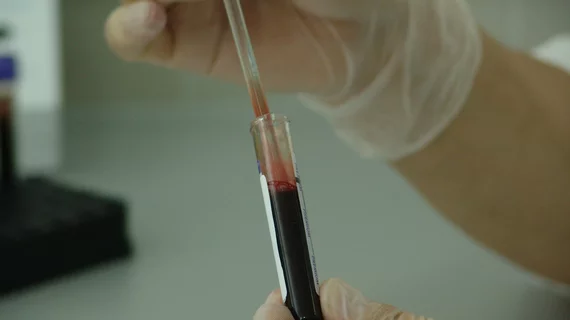A point-of-care troponin assay that yields results within about 15 minutes was equally effective at ruling out acute myocardial infarction (AMI) as a high-sensitivity troponin I (hs-cTnI) test performed in a laboratory setting, researchers reported in JAMA Cardiology.
The study was the first to report the clinical accuracy of Abbott’s point-of-care diagnostic troponin test (TnI-Nx), which is currently under development and not available commercially.
John W. Pickering, PhD, and colleagues studied 354 patients presenting to an emergency department in Christchurch, New Zealand, who had symptoms suggestive of a heart attack.
All patients had their blood drawn and immediately centrifuged to separate the plasma, which was then tested using both the TnI-Nx and Abbott’s Architect hs-cTnI assay. The latter test has CE mark approval in Europe but isn’t commercially approved in the U.S.
A total of 16.1 percent of the patients experienced type 1 AMI, the primary outcome. Both troponin tests achieved a similar area under the receiver operator characteristic curve (AUC)—a measure of diagnostic accuracy—with the TnI-Nx assay boasting a 0.975 and the Architect test carrying a 0.970.
None of the patients with TnI-Nx below 11 ng/L experienced a heart attack, comprising 56.7 percent of the cohort. Similarly, a hs-cTnI assay result of less than 3 ng/L characterized 43.5 percent of the patients as low risk, with sensitivity and negative predictive value both equaling 100 percent.
“The results suggest that the new TnI-Nx assay has similar clinical sensitivity to hs-cTn assays to accurately enable early rule out after a single baseline blood sample,” Pickering et al. wrote. “This is important because it means that it may be possible to safely rule out AMI within 15 minutes of blood draw in the ED for a substantial proportion of patients.”
The novel approach could facilitate earlier decision making, the authors said, whether that be faster referral to invasive treatment or more prompt discharge. It may also help avoid unnecessary transfers to secondary hospitals and be particularly useful in rural settings with limited access to laboratory-based troponin assays.
“The time taken for transporting the blood to a central laboratory and the subsequent centrifugation to prepare a plasma sample is a significant component of the turnaround time,” Pickering and colleagues wrote. “Point-of-care cardiac troponin assays that use whole blood and have short analysis times (of approximately 15 minutes) may expedite decision making.”
Although the TnI-Nx assay was designed to test either plasma or whole blood, plasma was used in this study. In addition, there was no data on the turnaround time associated with each assay, so the 15-minute capability touted by the authors is based on the potential of the test—not what was actually achieved in this analysis.
“Additional studies are needed to assess whole-blood and bedside performance, cost-effectiveness, performance as a function of time from symptom onset, and performance in conjunction with clinical risk scores and electrocardiogram as well as create validated decision-making thresholds,” the researchers wrote.
Abbott helped fund the study but didn’t participate in its design or conduct.

